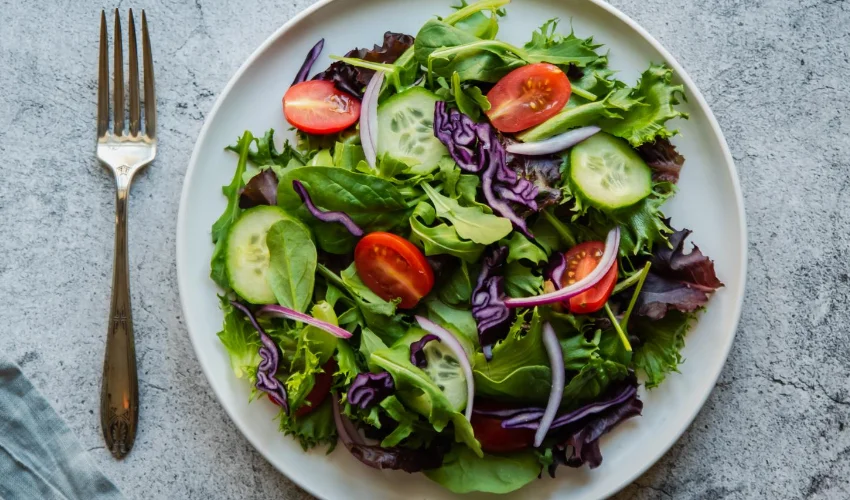Living with diabetes requires careful management of diet and lifestyle choices. While dining out can be enjoyable, it can also present challenges in maintaining blood sugar levels and making healthy food choices. In this article, we will provide valuable tips and strategies for individuals with diabetes and their caregivers to navigate restaurant menus and enjoy meals without compromising their well-being. By making informed decisions and following these guidelines, you can have a satisfying dining experience while keeping your diabetes in check.
Understanding Diabetes and Dietary Considerations
What is Diabetes?
Diabetes is a chronic condition that affects the body’s ability to regulate blood sugar levels. It is characterized by high blood glucose levels due to either insufficient insulin production or the body’s inability to effectively utilize insulin. There are two main types of diabetes: type 1 and type 2.
Importance of a Balanced Diet for Diabetes Management
A balanced diet plays a crucial role in managing diabetes. It helps control blood sugar levels, maintain a healthy weight, and reduce the risk of complications. A well-balanced diet for diabetes includes a variety of nutrient-rich foods, focusing on portion control and mindful eating.
Key Nutritional Factors to Consider
- Carbohydrates: Managing carbohydrate intake is vital for individuals with diabetes. It’s important to choose complex carbohydrates over simple ones and spread them out throughout the day to avoid blood sugar spikes.
- Protein: Including lean sources of protein, such as poultry, fish, beans, and tofu, helps maintain satiety and supports muscle health.
- Fiber: High-fiber foods, such as whole grains, fruits, vegetables, and legumes, aid in digestion, promote satiety, and help control blood sugar levels.
- Fats: Opting for heart-healthy fats, like avocados, nuts, seeds, and olive oil, is important for overall health, but portion control is essential due to their high calorie content.
Preparing for Dining Out
Plan Ahead Planning ahead can make dining out with diabetes easier. Consider the following steps:
- Check the menu online: Look for healthier options and nutritional information if available.
- Time your meal: Plan meals around regular mealtimes to maintain consistency in your diabetes management routine.
- Bring snacks: In case the restaurant’s options are limited, carry a small snack to stabilize blood sugar levels.
Research and Choose Diabetes-Friendly Restaurants
Look for restaurants that offer healthier choices and accommodate dietary needs. Many establishments now provide diabetic-friendly menus or are willing to accommodate special requests. Online reviews and recommendations from other individuals with diabetes can be helpful in finding suitable options.
Communicate with the Restaurant Staff
Inform the restaurant staff about your dietary restrictions and needs. This can help them understand your requirements and make appropriate accommodations. Don’t hesitate to ask questions about ingredients, preparation methods, and portion sizes.
Making Healthier Choices at Restaurants
Reading and Decoding Menus
Take the time to carefully read menus and make informed choices. Look for keywords that indicate healthier options, such as grilled, baked, broiled, steamed, or roasted. Avoid dishes that are described as fried, breaded, crispy, or creamy, as they tend to be higher in unhealthy fats and calories.
Controlling Portion Sizes
Restaurant portions are often larger than necessary, leading to overeating. Consider the following strategies to control portion sizes:
- Share a meal: Splitting an entrée with a dining partner can help reduce calorie intake.
- Request a half portion: Many restaurants are willing to provide smaller portions upon request.
- Ask for a takeout box: If your meal is large, immediately set aside a portion to take home for another meal.
Opting for Lean Protein Sources
Choose lean protein sources that are lower in saturated fats, such as skinless poultry, fish, lean cuts of meat, and plant-based proteins like tofu and legumes. Avoid processed meats and dishes with high-fat sauces or gravies.
Choosing High-Fiber Foods
Include high-fiber foods like whole grains, vegetables, and legumes in your meal choices. These foods can help regulate blood sugar levels and promote better digestion. Look for options like whole grain bread, brown rice, quinoa, and salads with plenty of vegetables.
Selecting Healthy Carbohydrates
Opt for complex carbohydrates that have a lower glycemic index and provide sustained energy. Choose whole grains, such as whole wheat pasta, brown rice, and whole grain bread, over refined carbohydrates like white bread and white rice.
Focusing on Heart-Healthy Fats
When it comes to fats, prioritize healthier options. Select dishes that contain sources of unsaturated fats, like avocados, nuts, seeds, and olive oil. Avoid dishes high in trans fats and saturated fats, such as deep-fried foods, butter, and full-fat dairy products.
Strategies for Specific Types of Restaurants
Fast Food Restaurants
Fast food options can be challenging for individuals with diabetes due to their high calorie, sodium, and unhealthy fat content. However, some strategies can help make healthier choices:
- Choose grilled or baked options instead of fried ones.
- Avoid sugary beverages and opt for water or unsweetened drinks.
- Skip the extra sauces, dressings, and mayonnaise.
Ethnic Restaurants
Ethnic restaurants offer a wide variety of flavors and dishes. Consider the following tips to make healthier choices:
- Opt for dishes with plenty of vegetables and lean proteins.
- Be cautious of heavy sauces and high-calorie additions.
- Request modifications, such as reducing oil or salt in your meal.
Buffets
Buffets can be overwhelming with their numerous options. To make healthier choices:
- Survey the buffet before starting, noting healthier options.
- Fill your plate with a variety of vegetables, lean proteins, and whole grains.
- Practice portion control and avoid going back for seconds.
Family-style Restaurants
Family-style restaurants often serve large portions. To navigate these establishments:
- Share dishes with others or request smaller portions.
- Choose grilled, steamed, or roasted options over fried ones.
- Focus on balanced meals that include vegetables, lean proteins, and whole grains.
Beverage Choices
Avoiding Sugary Beverages
Sugar-sweetened beverages can quickly raise blood sugar levels. Opt for healthier alternatives, such as:
- Water: The best choice for hydration.
- Unsweetened tea or coffee: If you prefer a warm beverage, opt for unsweetened options.
- Sparkling water or seltzer: Add a squeeze of lemon or lime for flavor.
Opting for Sugar-Free and Low-Calorie Options
If you prefer flavored beverages, choose diet or sugar-free options. However, keep in mind that these drinks may contain artificial sweeteners, so moderation is key.
Drinking Water
Water is essential for hydration and has no impact on blood sugar levels. Make it your go-to choice when dining out.
Smart Substitutions and Modifications
Requesting Grilled or Steamed Options
Ask the restaurant to prepare your dish by grilling or steaming instead of frying or sautéing. This reduces the amount of unhealthy fats and calories in your meal.
Choosing Dressings and Sauces Wisely
Many dressings and sauces are high in unhealthy fats, added sugars, and sodium. Opt for lighter options, such as vinaigrettes or dressings on the side, and use them sparingly.
Avoiding Deep-Fried Foods
Deep-fried foods are often high in unhealthy fats and calories. Look for alternative cooking methods like grilling, baking, or broiling.
Controlling Sodium Intake
Excess sodium can lead to high blood pressure and other health issues. Request for dishes to be prepared with less salt or ask for sauces and dressings to be served on the side, so you can control the amount added.
Tips for Desserts and Sweets
Portion Control
Indulging in desserts is possible with proper portion control. Consider sharing a dessert or choose smaller portions to satisfy your sweet tooth without consuming excessive sugar.
Sugar-Free and Low-Sugar Options
Look for desserts labeled as sugar-free or low-sugar. However, be mindful of other ingredients that can affect blood sugar levels or have a laxative effect when consumed in excess, such as sugar alcohols.
Sharing Desserts
Sharing a dessert with others allows you to enjoy the flavors without consuming a full portion. This strategy helps control sugar intake while still satisfying your craving.
Table: Examples of Healthier Food Choices for Individuals with Diabetes
| Meal Category | Healthier Food Choices |
|---|---|
| Appetizers | Fresh vegetable crudites with hummus |
| Grilled shrimp skewers | |
| Tomato and mozzarella salad | |
| Edamame | |
| Main Courses | Grilled chicken breast with steamed |
| vegetables | |
| Baked salmon with quinoa and roasted | |
| asparagus | |
| Stir-fried tofu with mixed vegetables | |
| Turkey or veggie burger in a lettuce | |
| wrap with a side salad | |
| Side Dishes | Steamed broccoli |
| Roasted Brussels sprouts | |
| Quinoa salad with mixed vegetables | |
| Baked sweet potato fries | |
| Beverages | Water |
| Unsweetened iced tea | |
| Sparkling water with a splash of lemon | |
| Sugar-free soda or diet drinks | |
| Desserts | Fresh fruit salad |
| Sugar-free Jello with whipped cream | |
| Greek yogurt with berries |
Maintaining Blood Sugar Control
Regular Monitoring
Monitor your blood sugar levels regularly to understand how different foods and dining experiences affect your readings. This knowledge will help you make more informed decisions in the future.
Adjusting Medications, if Necessary
Consult with your healthcare provider about any necessary adjustments to your diabetes medications or insulin dosage when dining out. They can provide guidance on managing your blood sugar levels during and after meals.
Tips for Caregivers of Individuals with Diabetes
Supporting Healthy Choices
Encourage and support your loved one in making healthier choices when dining out. Offer to research restaurants or help plan meals in advance.
Encouraging Open Communication
Maintain open communication with your loved one about their diabetes management goals and any challenges they face when dining out. Discuss strategies together and address any concerns they may have.
Being Mindful of Emotional
Living with diabetes can be emotionally challenging. Be empathetic and understanding towards your loved one’s feelings. Encourage them to enjoy dining out while prioritizing their health, and be there to provide support and encouragement.
Dining out with diabetes doesn’t have to be daunting. By planning ahead, making informed choices, and following the strategies outlined in this article, individuals with diabetes and their caregivers can enjoy healthier meals at restaurants while maintaining blood sugar control. Remember, moderation and mindful eating is key. With knowledge, preparation, and communication, you can navigate restaurant menus with confidence, ensuring a positive dining experience without compromising your health.




